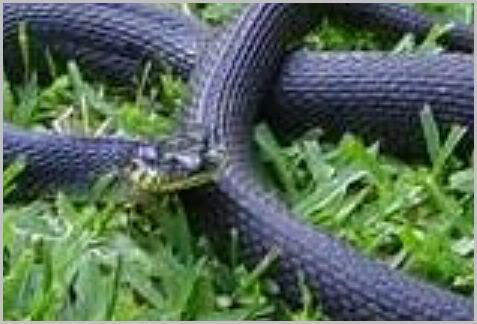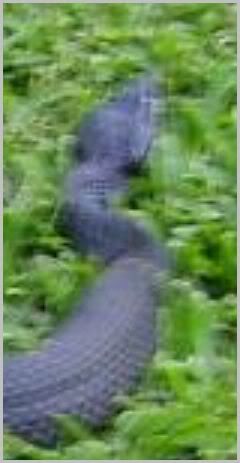You're welcome. I added more info about them later in the thread.
For the sake of convenience, here it is again...
================================
In addition to the heat-sensing organs ('pits'), pit vipers apparently have 'folding' or 'movable' fangs. The fangs of other vipers' are fixed.

Agkistrodon piscivorus leucostoma is a venomous pitviper subspecies[4] found in the south central United States. It is the smallest of the three subspecies tends to be darker in color.
Common names: western cottonmouth,[2] water moccasin, cottonmouth,[3] more.
http://en.wikipedia.org/wiki/Agkistrodon_piscivorus_leucostoma
__________________________________________
How to Spot a Cottonmouth Snake
The Cottonmouth is the only poisonous water snake found in North America. It is a pit viper and senses movement with its pit in between its eyes. The Cottonmouth snake is found in three subspecies. The Western Cottonmouth, the Eastern Cottonmouth, and the Florida Cottonmouth have common characteristics and traits that distinguish them from nonvenomous water snakes.
http://www.ehow.com/how_2090701_spot-cottonmouth-snake.html?ref=fuel&utm_source=yahoo&utm_medium=ssp&utm_campaign=yssp_art
__________________________________________
How to Identify a Pit Viper
1) Know the pit vipers range and habitat. A pit viper is one of the widest reaching groups of snakes in the world. They are found throughout the Americas, as well as Asia. They can survive in the hottest deserts, as well the wettest rain forest. Pit vipers are very adaptable snakes.
2) Realize that in North America, there are three major species of pit vipers. They are the cottonmouth, copperhead and rattlesnakes.
3) Observe that pit vipers can range in size from less than 30 cm all the way up to 12 feet long. An average size for a pit viper is probably around 5 feet long.
4) See that a pit viper has a heat sensing organ between its eye and nostril. This pit is the major feature that sets pit vipers apart. It allows the snake to sense heat. Some refer to this as a sixth sense.
5) Compare a pit vipers fangs to a rear fanged species such as the cobra. A pit viper folds its fangs under and back into the roof of its mouth. A cobra has fixed fangs that do not fold. The pit viper will extend the fangs out when it strikes in a stabbing motion, burying venom deep within its prey.
6) Observe that a pit viper's head is often triangular in shape, and is markedly wider than the neck of the snake. This is often due to the large venom glands in the snake's jaw. These glands also contain an extra muscle that allows for delivery of the venom through the fangs.
7) Know that pit vipers are generally give birth to live young as opposed to many other snake species that lay eggs. This allows the pit viper to deliver large amounts of young in a single birthing.
http://www.ehow.com/how_4493653_identify-pit-viper.html?ref=fuel&utm_source=yahoo&utm_medium=ssp&utm_campaign=yssp_art
__________________________________________
Here are a couple of zoom-ins of humblegunner's photos:

